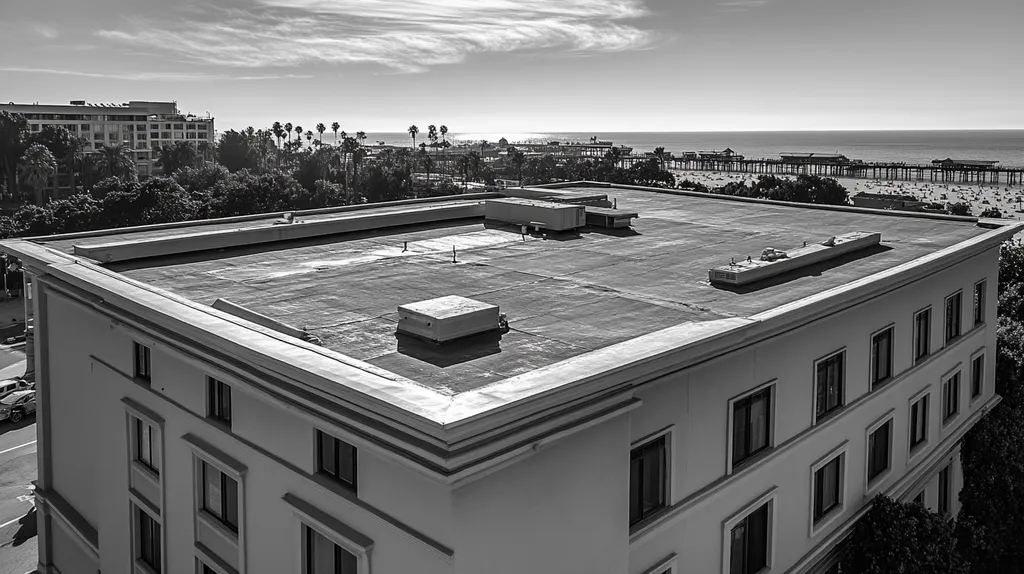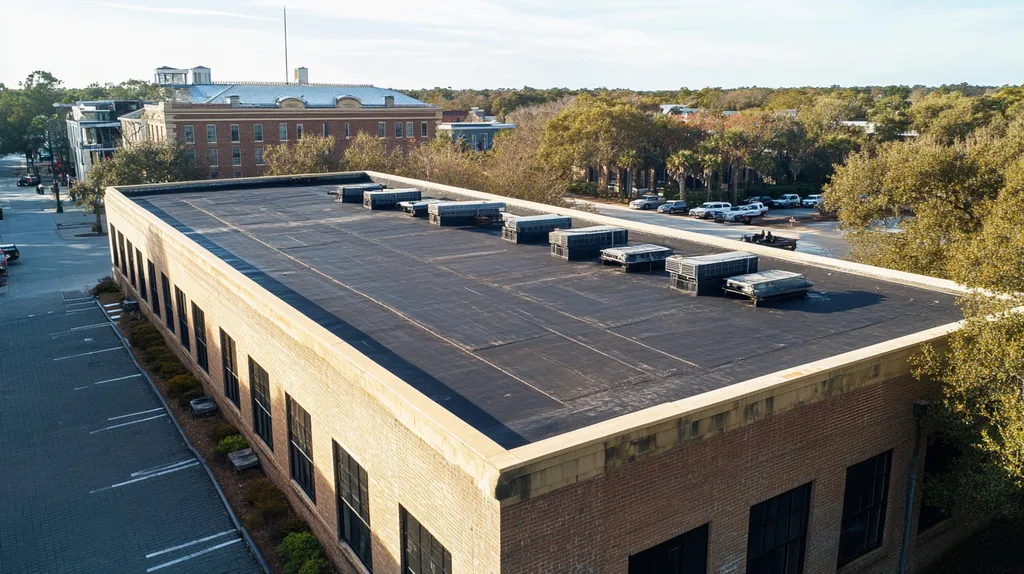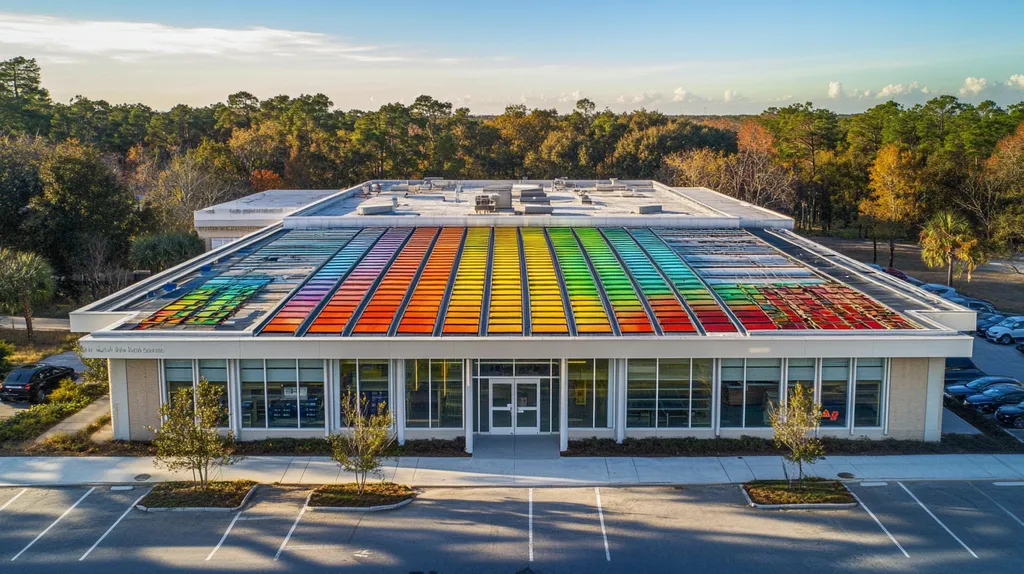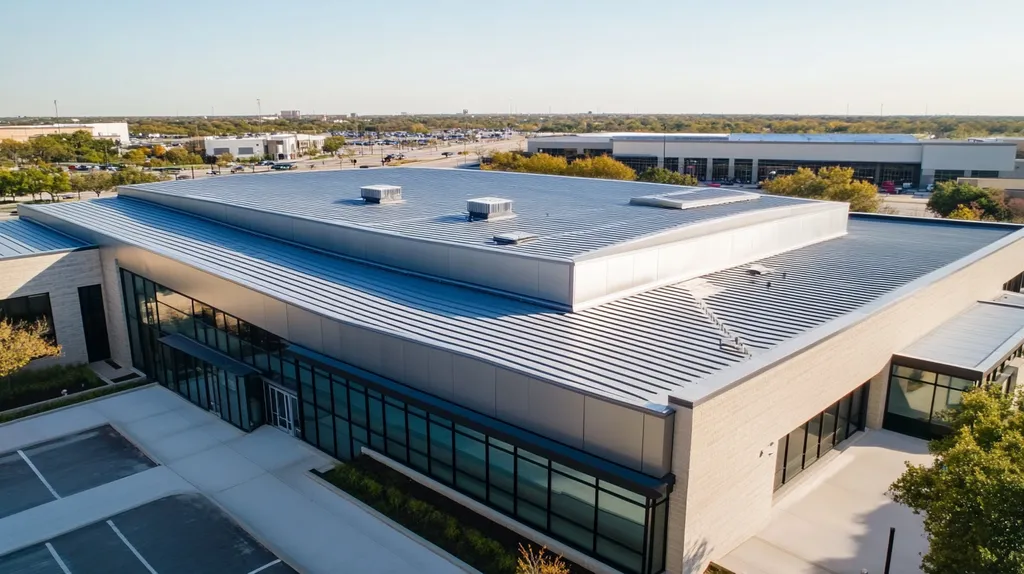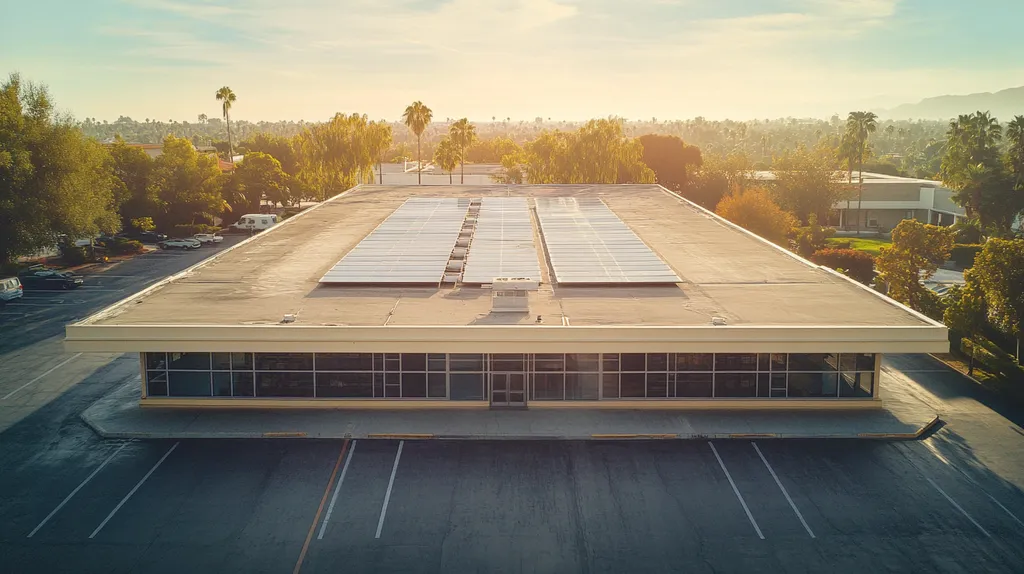Welcome to today’s Battle Royale featuring two roofing heavyweights: “Polyurethane Sealants” in the east corner versus “Silicone Sealants” in the west!
Tonight’s showdown pits these contenders against each other across six punishing rounds designed to test every aspect of their performance for Industrial Roof Maintenance.
At stake? Millions in potential costs, decades of building protection, and the critical performance demands of modern commercial and industrial facilities.
Our professional judging panel will evaluate each round on technical merit, real-world performance, and value delivery. After all six rounds, we’ll declare our ultimate champion.
Ladies and gentlemen, facility managers and building owners… it’s time to rumble!
ROUND 1: INITIAL COSTS & INSTALLATION
In today’s challenging economic environment, selecting the right roof sealant can make or break your maintenance budget. Roof sealants serve as a critical protective barrier for commercial buildings, shielding them from water intrusion, UV damage, and extreme weather conditions while enhancing energy efficiency through thermal insulation. Making an informed choice between polyurethane and silicone sealants requires careful evaluation of their costs, installation requirements, and project timelines. (source: American WeatherStar)
Material Expenses
When evaluating material expenses for industrial roof sealants, the initial price point only tells part of the story. While polyurethane sealants typically cost 20-30% less per square foot than their silicone counterparts, this upfront savings must be weighed against long-term performance.
Polyurethane sealants offer good initial value, making them attractive for projects with tight budgets. However, their shorter lifespan often necessitates more frequent reapplication, which can increase total ownership costs over time.
Silicone sealants command a premium price point but deliver exceptional durability and UV resistance. Their longer service life and reduced maintenance requirements can offset the higher initial investment, especially in harsh environments.
When comparing total lifecycle costs, including both materials and future maintenance, neither option emerges as clearly superior. Therefore, this category results in a TIE.
Installation Complexity
Installation procedures significantly impact both project success and labor costs. Polyurethane sealants require precise mixing ratios and specific temperature conditions for proper application, increasing the risk of installation errors.
These sealants also demand thoroughly clean and dry surfaces, making weather conditions a critical factor. Even slight moisture during application can compromise adhesion and performance, leading to potential failures.
Silicone sealants offer simpler single-component application with no mixing required. They can be applied in a wider range of temperatures and even tolerate slightly damp conditions without compromising performance.
The forgiving nature and straightforward application of silicone translates to faster installation times and reduced labor costs. This clear superiority in ease of use gives silicone sealants an ADVANTAGE in this category.
Project Timeline
Project duration directly impacts facility operations and overall costs. Polyurethane sealants typically require 24-48 hours of cure time before exposure to moisture, extending project timelines and increasing vulnerability to weather delays.
These extended cure times can force facility managers to plan around weather forecasts and may require temporary protection measures. Additionally, the mixing requirements add preparation time to each application session.
Silicone sealants typically achieve initial cure within 1-2 hours and can handle light moisture exposure much sooner. This rapid curing allows for same-day project completion in many cases, minimizing disruption to facility operations.
The significantly faster cure times and weather-resistant properties of silicone sealants provide clear scheduling advantages. This superiority in project efficiency gives silicone sealants an ADVANTAGE in this category.
ROUND 1 WINNER: Silicone Sealants
ROUND 2: DURABILITY & LIFESPAN
When it comes to protecting industrial facilities worth millions of dollars, the durability and lifespan of roof sealants can mean the difference between reliable protection and catastrophic failure. Every year, businesses lose an estimated $5 billion to water damage from failing roofs. Selecting the right sealant isn’t just about preventing leaks – it’s about ensuring business continuity and protecting valuable assets.
Environmental Resistance
Industrial roofs face brutal conditions daily, from scorching sun to chemical exposure and temperature swings of 100°F or more. Understanding how sealants perform under these challenges is crucial for long-term protection.
Polyurethane sealants demonstrate exceptional resistance to chemicals, oils, and mechanical stress. They maintain their structural integrity even when exposed to harsh industrial emissions and can withstand significant physical impact without compromising their protective qualities.
Silicone sealants excel specifically at UV resistance and extreme temperature variations. However, they can become brittle when exposed to certain chemicals and show reduced adhesion when subjected to constant pooling water.
For overall environmental resilience across the broadest range of industrial conditions, polyurethane sealants claim the ADVANTAGE.
Longevity
The true test of a sealant’s value lies in its ability to maintain performance over decades of service. This becomes especially critical in facilities where roof access is limited or production shutdowns are costly.
Polyurethane sealants typically maintain their protective properties for 20-25 years when properly installed and maintained. Their molecular structure allows them to retain flexibility while resisting breakdown from environmental exposure.
Silicone sealants generally provide 10-15 years of reliable service before requiring replacement. While they resist weathering well, their adhesive bonds tend to weaken over time, particularly in areas with high thermal cycling.
The significantly longer service life gives polyurethane sealants a clear ADVANTAGE in this category.
Maintenance Requirements
Regular maintenance ensures sealants perform optimally throughout their service life. The frequency and complexity of these maintenance needs directly impact facility operations and long-term costs.
Polyurethane sealants typically require only annual inspections and spot repairs. Their robust chemical bonds and resistance to deterioration mean fewer touch-ups and less frequent total replacement.
Silicone sealants demand more frequent inspection cycles, often quarterly in harsh environments. They’re more prone to surface contamination and may require regular cleaning to maintain their protective properties.
Based on lower maintenance demands and longer intervals between services, polyurethane sealants secure the ADVANTAGE.
ROUND 2 WINNER: Polyurethane Sealants
ROUND 3: PERFORMANCE FACTORS
In today’s industrial environments, roof sealant performance can mean the difference between protection and catastrophe. With facility downtime costs averaging $5,000 per hour, choosing the right sealant becomes a critical business decision. The protective coating applied to industrial roofs must shield against harsh environmental elements while maintaining its integrity across challenging conditions. (source: Standard Roofing OK)
Durability Under Stress
Industrial roof sealants face constant challenges from thermal cycling, structural movement, and mechanical stress. Their ability to maintain integrity under these conditions directly impacts facility protection.
Polyurethane sealants excel at handling physical stress, offering superior tensile strength and tear resistance. They maintain their protective properties even under constant movement and can absorb significant impact without failing.
Silicone sealants provide good flexibility but can struggle with mechanical abuse and heavy traffic. Their softer composition makes them more susceptible to physical damage and tears.
For overall durability under demanding conditions, polyurethane sealants claim the ADVANTAGE.
UV Resistance
Ultraviolet radiation poses a significant threat to roof sealant integrity, particularly in sunbelt regions where exposure is intense year-round. The ability to resist UV degradation directly affects service life and performance.
Polyurethane sealants typically require additional UV protective additives to prevent degradation. Even with these additions, they may show signs of chalking or surface breakdown over time.
Silicone sealants naturally resist UV radiation without requiring special formulation. They maintain their physical properties and flexibility even after decades of sun exposure.
Given their inherent UV stability, silicone sealants earn a clear ADVANTAGE in this category.
Temperature Tolerance
Industrial roofs routinely experience temperature swings exceeding 100°F, demanding sealants that can handle extreme variations. Performance must remain consistent across both seasonal and daily temperature cycles.
Polyurethane sealants demonstrate excellent stability across a wide temperature range. They remain flexible in cold conditions while maintaining strength in high heat.
Silicone sealants show similar capabilities, with exceptional performance in both temperature extremes. Their molecular structure allows them to expand and contract without losing adhesion.
With both options delivering robust temperature performance, this category results in a TIE.
ROUND 3 WINNER: POLYURETHANE SEALANTS
ROUND 4: MAINTENANCE REQUIREMENTS
Every year, industrial facilities lose millions due to inadequate roof maintenance. Without proper upkeep, even the best sealants can fail prematurely, leading to costly repairs and potential production shutdowns. Commercial roof sealant maintenance can help prevent costly repairs and replacements, reduce energy costs, and extend the life of the roof. (source: A-1 Tropic)
Inspection Frequency
Regular inspections are crucial for identifying potential issues before they escalate into major problems. The frequency and thoroughness of these inspections directly impact the longevity of roof sealant systems.
Polyurethane sealants require quarterly inspections due to their susceptibility to UV damage and environmental wear. These inspections must specifically check for signs of chalking, cracking, or adhesion failure.
Silicone sealants can typically maintain their performance with semi-annual inspections. Their superior UV resistance and weatherability reduce the need for frequent monitoring.
Given the reduced inspection burden, silicone sealants claim the ADVANTAGE in this category.
Repair Complexity
When repairs become necessary, the ease and effectiveness of these repairs significantly impact maintenance costs and facility operations.
Polyurethane sealants present challenges during repairs, requiring complete removal of damaged sections and careful surface preparation. Their chemical composition makes it difficult to achieve proper adhesion between old and new material.
Silicone sealants offer simpler repair solutions, readily bonding to existing silicone without extensive surface preparation. This characteristic allows for faster, more reliable repairs with minimal disruption.
The superior repair characteristics give silicone sealants the ADVANTAGE in this category.
Long-term Performance
The ability of sealants to maintain their protective properties over time directly affects maintenance requirements and total ownership costs.
Polyurethane sealants gradually lose flexibility and weather resistance, requiring increasing maintenance attention as they age. Their performance degradation accelerates in areas with high UV exposure or chemical exposure.
Silicone sealants maintain consistent performance characteristics throughout their service life. Their stable molecular structure results in predictable aging and fewer maintenance surprises.
Based on more consistent long-term performance, silicone sealants earn the ADVANTAGE.
ROUND 4 WINNER: SILICONE SEALANTS
ROUND 5: SUSTAINABILITY CREDENTIALS
The environmental impact of industrial roofing materials has become a critical concern, with growing regulatory pressure and corporate sustainability goals driving decision-making. Studies show that buildings account for nearly 40% of global energy consumption and carbon emissions, making sustainable roofing choices more important than ever. Selecting the right sealant can dramatically impact a facility’s environmental footprint, energy costs, and compliance with green building standards.
Environmental Impact
The manufacturing and disposal of roofing sealants can have significant environmental consequences. Polyurethane sealants require energy-intensive production processes and often contain high levels of volatile organic compounds (VOCs), which contribute to air pollution and potential health risks during application.
When polyurethane sealants reach the end of their lifecycle, they present disposal challenges. These materials typically cannot be recycled and may require special handling as industrial waste, contributing to landfill burden.
Silicone sealants generally have a lower environmental impact during production and application. They typically contain fewer VOCs and toxic compounds, making them safer for both installers and building occupants.
Given their reduced environmental footprint throughout their lifecycle, silicone sealants earn the ADVANTAGE in this category.
Energy Efficiency
Proper sealant selection directly impacts a building’s energy consumption. Polyurethane sealants provide good initial thermal resistance but can degrade over time, particularly when exposed to UV radiation and temperature extremes.
As polyurethane ages, its insulating properties may diminish, leading to increased energy costs for heating and cooling. This degradation often accelerates in harsh industrial environments.
Silicone sealants maintain their thermal performance characteristics throughout their service life. Their molecular stability ensures consistent insulation values even after years of environmental exposure.
Based on long-term energy efficiency performance, silicone sealants claim the ADVANTAGE.
Recyclability and Disposal
Maintaining the roof coating’s integrity while minimizing environmental impact requires careful consideration of end-of-life disposal options. Regular assessment and proper maintenance can extend service life and reduce waste generation. (source: Standard Roofing OK)
Polyurethane sealants pose significant challenges for recycling programs. Their chemical composition makes them difficult to process, and they often require disposal in specialized facilities.
Silicone sealants offer better recyclability options and can often be processed through standard industrial waste streams. Their longer service life also means less frequent replacement and reduced waste generation.
The superior end-of-life management options give silicone sealants the ADVANTAGE in this category.
ROUND 5 WINNER: SILICONE SEALANTS
ROUND 6: SPECIALIZED APPLICATIONS
In today’s complex industrial environments, choosing the right sealant for specialized applications can mean the difference between optimal protection and catastrophic failure. Modern industrial roofs must withstand extreme conditions while protecting millions in assets and operations below. Roof coatings and sealants create a seamless and waterproof barrier that protects the underlying roofing materials from water infiltration, extending roof life and improving energy efficiency. (source: Lintaroofing)
High-Traffic Areas
Industrial roofs often serve as platforms for HVAC equipment, solar installations, and maintenance access routes. These high-traffic zones require sealants that can withstand constant physical stress while maintaining their protective properties.
Polyurethane sealants excel in these demanding conditions, offering superior compression resistance and recovery properties. Their robust chemical structure allows them to maintain integrity even under frequent foot traffic and equipment vibration.
Silicone sealants tend to soften under sustained pressure and can show premature wear in high-traffic areas. Their lower tensile strength makes them more susceptible to physical damage from maintenance activities.
For applications involving regular mechanical stress and traffic, polyurethane sealants claim the ADVANTAGE.
Chemical Exposure Zones
Areas around industrial vents, exhaust systems, and processing equipment often expose roofing materials to harsh chemicals. The ability to resist these compounds while maintaining protective properties is crucial for long-term performance.
Polyurethane sealants demonstrate exceptional chemical resistance across a broad spectrum of industrial compounds. Their molecular structure remains stable even when exposed to oils, solvents, and acidic emissions.
Silicone sealants can degrade when exposed to certain chemicals, particularly petroleum-based substances. This vulnerability can lead to premature failure in areas with high chemical exposure.
Given their superior chemical resistance, polyurethane sealants earn the ADVANTAGE in this category.
Thermal Expansion Zones
Areas where different roofing materials meet or where structural elements penetrate the roof surface require sealants that can accommodate significant movement. These transition zones experience intense stress from thermal cycling and building movement.
Polyurethane sealants provide good initial flexibility but can become less accommodating over time. Their movement capability typically ranges from ±25% to ±35% of joint width.
Silicone sealants maintain superior flexibility throughout their service life, easily handling movement of ±50% or more. Their elastic properties make them ideal for expansion joints and material transitions.
For applications requiring maximum movement accommodation, silicone sealants take the ADVANTAGE.
ROUND 6 WINNER: Polyurethane Sealants
AND THE WINNER IS…
After six grueling rounds of technical evaluation, we have our verdict…
Ladies and gentlemen, with three rounds to two (and one even match), your NEW Industrial Roof Maintenance Champion is… SILICONE SEALANTS!
This victory comes on the strength of outstanding performances in maintenance requirements, sustainability credentials, and crucial installation advantages. Silicone’s superior UV resistance, simplified repair procedures, and impressive environmental credentials proved decisive in this heavyweight bout.
But don’t count polyurethane out of the fight! When it comes to chemical exposure zones and high-traffic areas, this seasoned veteran still packs a powerful punch. For facilities facing intense industrial emissions or constant mechanical stress, polyurethane remains a formidable contender.
Remember, facility managers and building owners: While we’ve crowned our champion today, every building presents unique challenges. Local climate conditions, specific industrial exposures, and individual facility requirements can all impact sealant performance. Professional consultation remains essential for matching your property’s specific needs with the right sealant solution.
In the high-stakes arena of industrial roof protection, the true victory comes not from blindly following the champion, but from selecting the right contender for your specific fight. Choose wisely – millions in facility protection hang in the balance!
FREQUENTLY ASKED QUESTIONS
Q. What are initial costs for commercial roof sealants?
A. Initial costs vary; polyurethane sealants are typically 20-30% cheaper than silicone options.
Q. How durable are polyurethane sealants for industrial roofs?
A. Polyurethane sealants can last 20-25 years, providing effective protection against harsh conditions.
Q. How do polyurethane sealants perform under stress on a commercial roof?
A. They excel in handling mechanical stress, offering strong tear resistance and flexibility over time.
Q. What is the inspection frequency for silicone sealants on industrial roofs?
A. Silicone sealants typically require semi-annual inspections due to their superior resistance to environmental wear.
Q. Are silicone sealants more environmentally friendly for commercial roofs?
A. Yes, silicone sealants have lower VOCs and a smaller environmental impact throughout their lifecycle.
Q. How do I choose sealants for high-traffic areas on my industrial roof?
A. For high-traffic areas, opt for polyurethane sealants due to their enhanced compression resistance and durability.
Q. What factors influence the lifespan of sealants on my industrial roof?
A. Lifespan is influenced by environmental factors, maintenance, and the sealant’s chemical properties and formulation.

